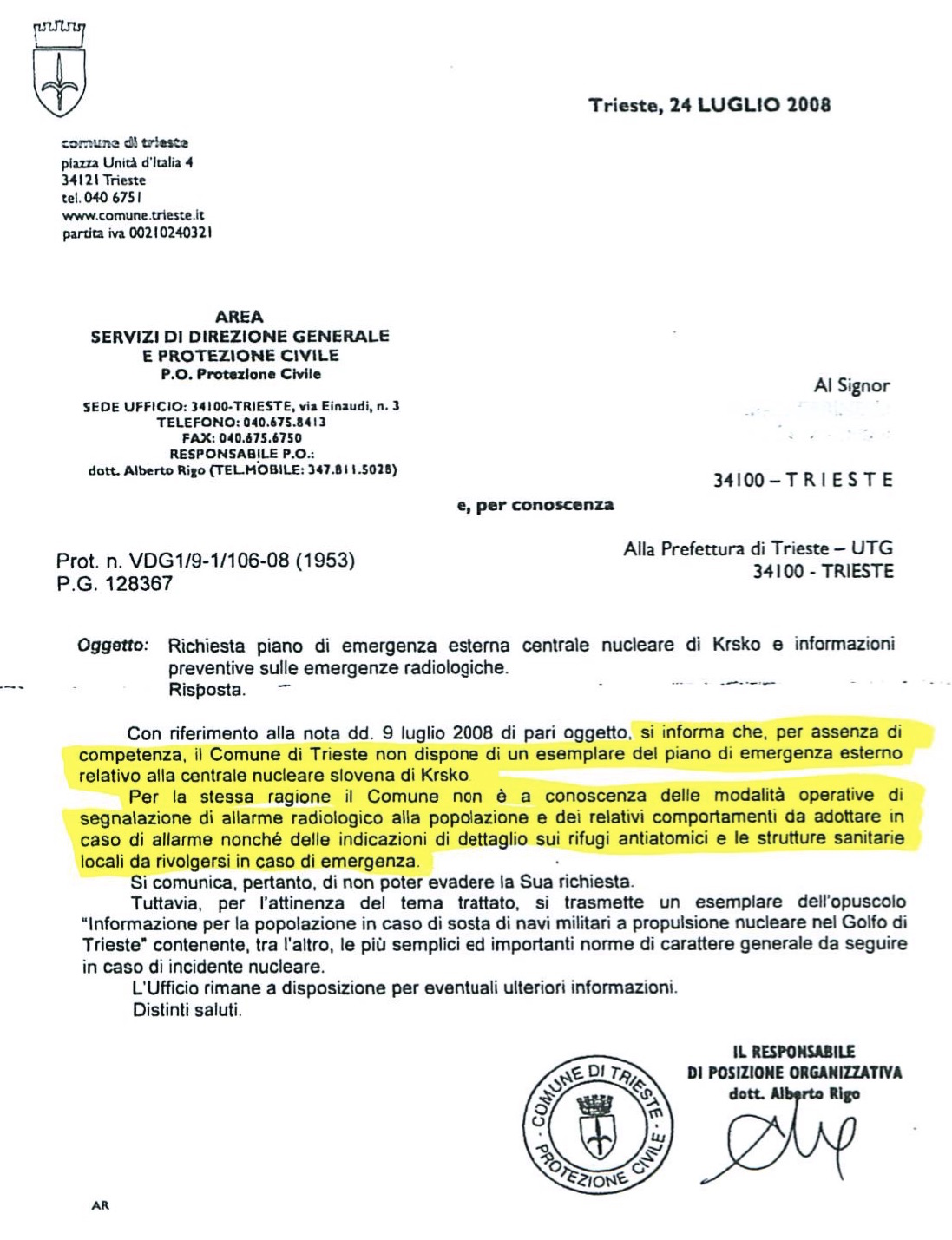
Fallout simulation at the Krško Nuclear power plan – NPP. Colorimetric method. Study by Dr. Giuseppe Nacci.
WAITING FOR SLOVENIA’S “BIG ONE” WHILE IN TRIESTE NOBODY CARES ABOUT PREVENTING RADIOLOGICAL EMERGENCIES. AND THE U.N. STAYS SILENT ABOUT THE NUCLEAR PORT OF TRIESTE.
A Nuclear Power Plant – NPP in an area very seismic area. And, by now, a rather obsolete one. However, it provides a significant part of Slovenia and Croatia’s power. We are talking about the Krško NPP, not far from Trieste.
Slovenia is waiting for its “Big One”, one of the great earthquakes that cyclically hit the Ljubljana area. The one that occurred in 1511 was devastating: it destroyed the whole city. That of 1895 measured 6.1 on the Richter scale, and it caused significant damages as well.
Looking at a map of Slovenia’s seismic risk, the Ljubljana area is on a strip exposed to earthquakes up to 8 on the Richter scale. And the same is true for Krško’s area. Knowing which of the two areas will be hit first by the next “Big One” is outside human capacity of prediction. The only certainty is, one of them will.
And it might be a matter of months, not years. Is it possible that nobody thinks about it?
Is it possible that, even facing such a risk, the areas at risk did not adopt prevention measures in case of radiological emergencies? Aren’t the consequences of an atomic disaster in the Krško NPP a good enough incentive?
On its side, Trieste is waiting since 20 years for an External Emergency Plan (EEP) in case of a tragedy at the Krško NPP. The EEP is a necessary instrument to grant at least some safety to the capital city of the Free Territory of Trieste, which is only 120 Km away from the epicenter of a possible, radioactive fallout.
In 2008, after 10 years of legal struggle, the European Commission dismisses the related infringement proceeding against Italy. The proceeding followed one of my complaints: I was denouncing Italy’s failure to comply with Euratom directives in Trieste. It was in this complaint that I first revealed that Trieste is classified as a NATO nuclear port, and that its Emergency Plan was confidential.
The European Commission’s decision to take no further action followed Italy’s communication that it would (finally) fulfill the obligations to grant the citizens’ safety in case of radiological emergency (regardless it it happened in the Krško NPP or because of a nuclear-powered ships).
This is how the drafting an EEP for Trieste’s port begun, covering also the event of a relevant accident at the Krško NPP.
There is not other reason why the EEP of Trieste’s port was disclosed, updated and made public.
Finally, we were able to learn about what to do in case a radiological emergency were to hit Trieste. And we did also learn that the EEP was a magre collection of senseless and generic direction about what citizens and authorities were supposed to do in the event of a radioactive fallout.
Kind of a schoolbook explaining some vague theory of radioactivity, hypothetic prevention measures, and outlines for the Civil Protection Department which, we found out later, only exist on paper. There was nothing real in the EEP. It was a joke. A disturbing one, given the consequences that this carelessness could have.
It’s been years since that discovery, yet, nothing has changed. Nobody bothered to issue new measures to protect Trieste’s citizens of Trieste from the radiological emergencies they are still exposed to. Including the nuclear port of Trieste.
No information available would be of actual use to the citizens. No health facility has the equipment to face a radiological emergency. There are still no fallout shelter. This is our current, unchanged reality.
Hoping that the Krško Big One never comes.
Translated from blog “Ambiente e Legalità” – “Environment and Legality” by Roberto Giurastante

